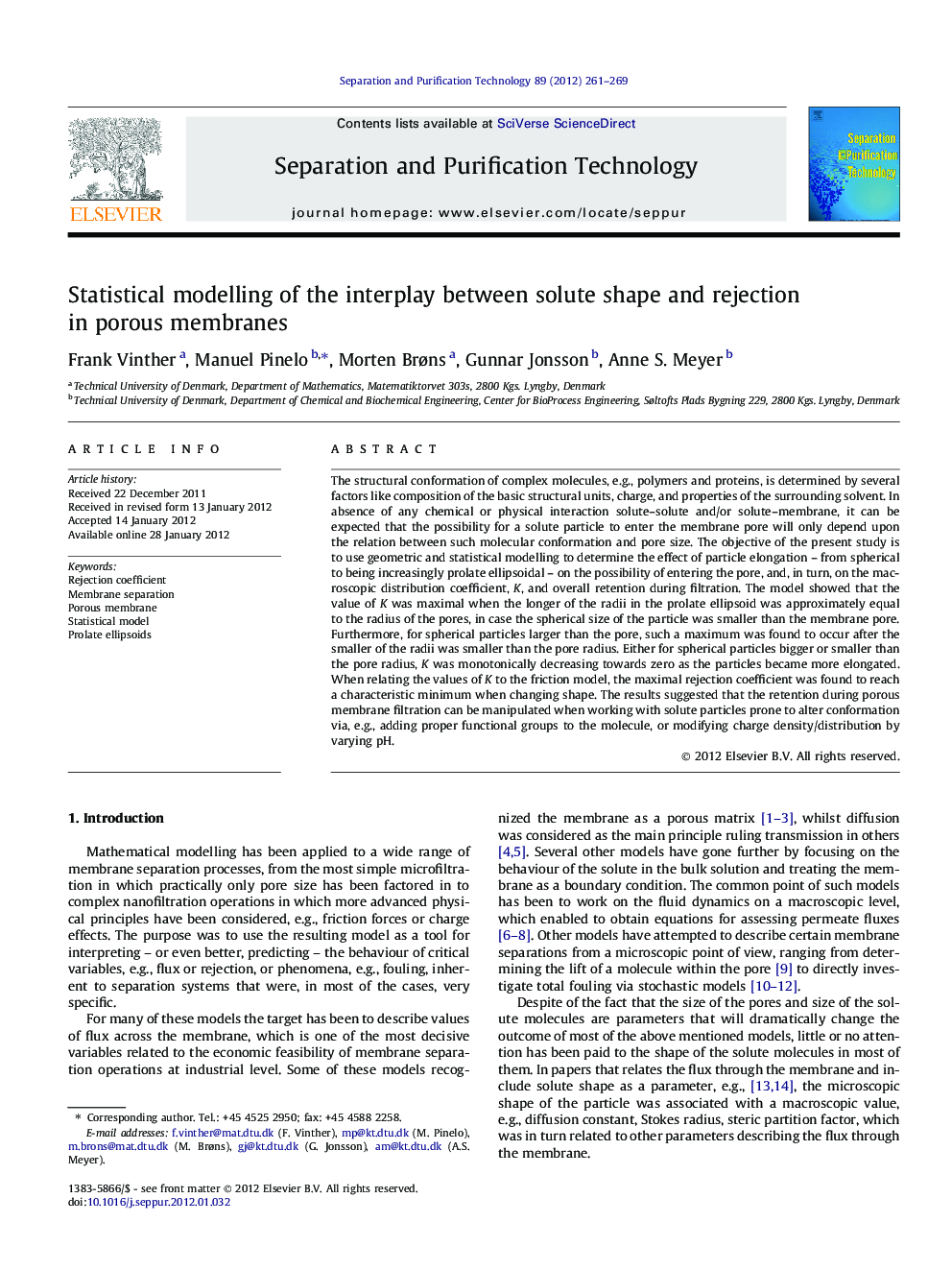| Article ID | Journal | Published Year | Pages | File Type |
|---|---|---|---|---|
| 642279 | Separation and Purification Technology | 2012 | 9 Pages |
The structural conformation of complex molecules, e.g., polymers and proteins, is determined by several factors like composition of the basic structural units, charge, and properties of the surrounding solvent. In absence of any chemical or physical interaction solute–solute and/or solute–membrane, it can be expected that the possibility for a solute particle to enter the membrane pore will only depend upon the relation between such molecular conformation and pore size. The objective of the present study is to use geometric and statistical modelling to determine the effect of particle elongation – from spherical to being increasingly prolate ellipsoidal – on the possibility of entering the pore, and, in turn, on the macroscopic distribution coefficient, K, and overall retention during filtration. The model showed that the value of K was maximal when the longer of the radii in the prolate ellipsoid was approximately equal to the radius of the pores, in case the spherical size of the particle was smaller than the membrane pore. Furthermore, for spherical particles larger than the pore, such a maximum was found to occur after the smaller of the radii was smaller than the pore radius. Either for spherical particles bigger or smaller than the pore radius, K was monotonically decreasing towards zero as the particles became more elongated. When relating the values of K to the friction model, the maximal rejection coefficient was found to reach a characteristic minimum when changing shape. The results suggested that the retention during porous membrane filtration can be manipulated when working with solute particles prone to alter conformation via, e.g., adding proper functional groups to the molecule, or modifying charge density/distribution by varying pH.
► We model how probable it is for different shapes of solute to enter the pore. ► Probability to enter the pore has been related to maximal rejection in filtration. ► Slightly elongated particles had a lower rejection than spherical ones. ► Rejection increased monotonically as particles became more linear. ► Rejection could be manipulated when working with molecules prone to change shape.
